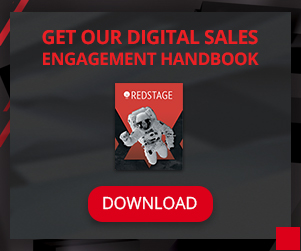
by Latoya Young | Oct 29, 2019 | Commerce Strategy, System Integrations, Web Development
Most Amazon Prime members make an online purchase once per week, and plaintiff lawyers are delivering ADA-compliance lawsuits even faster. The Supreme Court is showing no remorse for companies whose websites are not ADA-compliant. If you get served, your only option is to pay up. Here are 6 steps some of our clients have taken to successfully operate an ADA-compliant website and avoid costly damages.
Disclaimer: The information provided in this blog does not and is not intended to constitute legal advice. All content and information available are for informational purposes only.
Step 1: Understand the Seriousness of ADA-Compliance

The American Disabilities Act requires all places of public accommodation to be accessible to individuals with disabilities. It’s no surprise that in the year 2019, the world wide web is now considered a place of public accommodation (See: Title III).
In 2016, Domino’s Pizza Inc. was hit with an ADA- compliance lawsuit that claimed the website doesn’t ensure the blind and visually impaired can order food through the website or mobile app. As of October 7, 2019, the Supreme Court is refusing to review Domino’s appeal on the basis that ADA is a strict liability law, meaning there are no excuses for non-compliance violations.
Plaintiff lawyers are working overtime to serve up lawsuits for non-compliant companies. No matter how many unique visitors your website attracts, if it’s inaccessible for web users with mental or physical disabilities, your business is a target for legal action
Reports reveal that there is one web-related ADA lawsuit every working hour. This means 8 a day, 40 a week, and more than 2,000 a year. In 2018, more than 7,500 ADA suits were arraigned in federal court. Now that you understand it’s not a question of if, but when you’ll be targeted, let’s dive into the Web Content Accessibility Guidelines.
“While plaintiff lawyers handing out ADA-compliant lawsuits may seem predatory it is necessary and an important part of our justice system. Our government alone would not have the resources to enforce important regulations. So, these lawsuits are here to stay. Companies must know that there are consequences for non-compliance. As a business stakeholder, we have the challenge of balancing compliance, cost, and customer experience.
— Adam Morris, CEO, Redstage.
Step 2: Review Web Content Accessibility Guidelines

6.2 billion shoppers are expected to shop online this Cyber week alone, leaving eCommerce businesses vulnerable to potential lawsuits. To help you prepare, the Web Content Accessibility Guidelines (WCAG) explains how users with disabilities can access sites. While you’re in the process of strategically planning your holiday content, be sure to double-check all points of access to your store. You need to ensure your site is “perceivable, operable, understandable, and robust.” For a full explanation of these terms, see the link to WCAG above.
Taking proper measures to get an ADA-compliant website will save companies time and money. This step is always forgotten, overlooked, and never budgeted for. Many helpful tools can let you know if your site passes ADA requirements and extensions that come with approved codes.
— Jignesh Joshi, Sr. Project Manager, Redstage
Step 3: Add Alternative Means of Access

Ensuring your content is ‘perceivable’ may not be the toughest task you’ll face on your ADA-compliance journey. In fact, it may even be the opposite. According to the WCAG, all images including charts and infographics must include alt-text. Since SEO and content marketing are already part of your eCommerce strategy, you’ve likely already added alt-text to all of your imagery. To make sure, take some time to go through your archive and add relevant alt-text wherever it’s missing. This process may be tedious, but site readers (software) must be able to successfully read and describe your images to the blind and visually impaired.
54% of consumers want to see more video content from a brand or business they support. Naturally, videos have become a common practice for brands. All published video and audio files must also be accessible to those with disabilities. This can be achieved by including closed captions and text transcripts.
Closed captions should be accurate and in sync with video while text transcripts should accurately convey what’s in the video file. If you’re producing audio content like podcasts, you may want to pay close attention.
The WCAG updates are continuous and it can be easy to overlook minor details like fonts, for example. Make sure your fonts are clearly readable and properly displayed on a high contrast background. To play it safe, keep the standard light background and dark font. These minor changes can be a huge help for your users to easily navigate your site.
Step 4: Provide Easy Navigation for your Users

Luckily for our readers, we’ve been sharing tips on how to provide a fast and frictionless user experience for customers all year. If you’ve been following along, you should already be one step ahead, since user operation for ADA-compliance and frictionless experiences go hand-in-hand. When focusing on navigation, the first step is to ensure your website’s entire navigation can be fully operated via keyboard, without a mouse or touchscreen.
Users should have the ability to pause, slow down automatic movements, interact with images, and play videos through the keyboard. One tip is to stay away from auto-play to give your visitors enough time to read and process content.
Secondly, if your website doesn’t have a search function that can help your customers find products and information at ease, it’s required under the Web Accessibility Standards to have one.
Lastly, do not forget to include a site map. Remember, a positive user experience requires users to have the ability to operate your website that is understandable and feels natural. Again, you probably have one already because site maps improve your SEO.
Step 5: Website Features Should Be Understandable

When producing content, remember: all of your visitors must be able to read and understand it. Providing a default language function can not only keep you out of a lawsuit, but it can positively affect your conversion rate. We all know the uncomfortable feeling of standing in the middle of a conversation without understanding what is being discussed. To ensure your users and their reading assistance technology can properly function, refrain from the use of jargon, idioms, and abbreviations without properly introducing or explaining them.
Your website may already have the main functions that are considered predictable under the WCAG. Your users should be able to come to your website and predict what will happen as they interact. If you’re unsure, we have provided a brief checklist below.
- An X in the upper left- or right-hand corner for users to close the window.
- All Visible forms have instructions
- Navigation is consistent across all pages (Up, down, left, right,)
It may seem like a lot to fine-tune your website. Make sure you keep your developers in the loop as they’re coding and responsible for making sure your website is running smoothly. It takes a lot of work to get fully compliant. Once you’ve achieved compliance, you’ll want to keep it that way.
Step 6: Website Should Be Error-Free

While developers have a lot on their to-do list, the main priority is to make sure your website is robust enough to be considered ADA-compliant. This step may take the most time, but it can save you more than $50,000. Without getting into too much coding jargon, the overall presentation must be error-free and coded with standard HTML tags. We touched on some of these points earlier in the article, so here’s a quick checklist to review with your developers.
- Clear Descriptive Text
- Nested Headings
- Clear Forms
- Uniform Labels
- Section Labels
- Clean Code
Keep in mind that the work you do to make your site accessible benefits ALL users, not just those who may have disabilities. You will see the positive results of providing an accessible, easy-to-use site almost immediately.
—Kevin Rydberg, Managing Accessibility Consultant, Siteimprove
Final Thoughts
Remember, reaching ADA-compliance is a process with many steps to complete. With an estimated 30% increase in lawsuits this year, there’s no time to waste. Remember, the information provided in this blog does not and is not intended to constitute legal advice. Our trusted partners at Siteimprove can help you pinpoint accessibility issues that can potentially put your site at risk of an ADA-compliance lawsuit. Consider them your first step to protection before lawyering up. They can get you involved in a program that will help shield you from those who would target your online store. Do not hesitate to get a powerful, free website report and request a Demo here.
If you’re looking for a more robust, comprehensive solution to cover all holiday risks (including security, bug monitoring, and ADA-compliance, check out Redstage’s new security and maintenance bundle here. Feel free to drop us a line if you have any questions! We’re always happy to help.

by Don Pingaro | Sep 21, 2019 | Commerce Strategy, System Integrations
Congratulations! You survived the Back to School retail surge. While the true test of eCommerce performance is yet to come, any hurdles you encountered during Back to School should be taken care of well before then. Consider these your warning shots. To help, here are 3 precautionary measures you can take to digitally strengthen your store for the holidays.
1. Stress Test to Avoid Lost Revenue
A wave of more than 6.2 billion shoppers will descend on digital retailers during Cyber Week. Unfortunately, not all businesses are prepared for success…
For example, J. Crew’s site crashed on Black Friday in 2018 and issues persisted throughout the afternoon. Analysts predict the outage cost the company around $780,000 in just five hours. Shoppers flocked to Twitter to complain en masse, causing a firestorm of anger to erupt across the web. This is where the real damage was done. Like a ghost story from holidays past, this is a warning for retailers everywhere to change for the better.

Redstage’s CEO Adam Morris identified the top “holiday rush” issues we’ve helped clients through in years past. Here’s what to watch out for:
1. Slow Site Speed
2. Price Caching
3. Broken or Buggy Checkout
4. Server Overload or Timeout
5. Add to Cart Features Failing
“The holidays are a time of increased profits, but that comes with a huge load on websites,” Morris says, “So if you haven’t done proper stress testing to account for higher demand, you won’t know how your online store is going to react.”Adam Morris, CEO at Redstage
Preparing for the worst now can save you money and your reputation later with one simple step— testing. Skipping this step could spell disaster that leaves the specter of poor service hanging over your reputation for years to come.

2. Your Back-End Checklist at Present
From Thanksgiving to Black Friday through the end of Cyber Week, retailers have a few critical days to rake in as many sales as possible. During this shopping frenzy customers both in-store and online. Regardless of how they buy, your online store (or your app) will more than likely be their first stop. We developed a checklist of what you can do today to ensure your eCommerce site survives Cyber Week.
- Optimize your site’s user experience with A/B testing.
- Check your indexing to avoid price caching.
- Review all error codes to avoid a broken checkout.
- Avoid overload and crashes by scaling your server.
- Double-check key functions to avoid important features failing.
- Complete load testing to prepare for an increase in traffic.
- Utilize an automated monitoring system for real-time updates on 404s and checkout errors.
- Upgrade your payments and security platforms to prevent payment fraud.
- Lastly, be prepared to scale up your support team on the fly. If something goes wrong, even for a few minutes, you’ll need a sizable support team to manage angry customers and correct the issues.
“If you’re not using visitor data to identify the friction points in your checkout, you risk focusing your budget in the wrong places. A data-driven approach to optimization means trusting your analytics even when the message is counter-intuitive.”Oliver Sosinsky, Sr. Solutions Engineer at Redstage
Learn a valuable lesson from LuLu Lemon. Last year, the athleisure brand’s site went down the morning of Thanksgiving Day. Shopper outrage hit Twitter at 8am EST with a “Site is down. Ugh!”
In the first minutes of the shopping event of the year, the brand was stuck, entangled in crisis. Once the site got back online, more errors appeared, causing sales prices for in-cart items reset to regular prices or prevent customers from checking out.
With proper bug monitoring and back-end preparations, this fiasco could have been avoided. Take a page out of our book and start monitoring now. You’ve done the legwork to bring customers to your site, now protect it.

3. Capitalize on the Future
A single visitor doesn’t guarantee a transaction and a single transaction doesn’t guarantee a loyal customer. Flawless mobile experiences will do both, but takes some serious testing.
Conversion rate optimization turns your visitors into customers while ensuring they receive an immaculate customer experience. While no two customers are the same, simple tests can lead to enhancements that remove friction from the checkout and dramatically reduce abandoned carts.
Merchants like LawnmowerTirestore.com took advantage of testing their site before the holiday season and the results were a game changer. By making their checkout button stick to the site’s header and follow users while they scrolled, sales soared with a 29.5% increase in revenue per visitor (RPV) for desktop customers. For mobile, the test yielded a 7% increase in RPV, after only 4 weeks of testing. Now, Lawnmower Tirestore plans to roll-out the feature site-wide to capitalize on their new-found data-driven advantage.
As part of the Mobile Optimization Initiative, retailers can receive checkout tests 100% free. The goal of the initiative is to create a set of best practices for mobile optimization and share our insight with the world. Read more about the initiative here.

Final Thoughts
According to Internet Retailer, 60% of consumers plan to spend 50% or more of their holiday shopping online; spending over $21.6 billion during Cyber week.
It is not too late to prepare. If you start early enough and cover all the bases, you can sit back, relax and watch your revenue grow with measurably less stress. Remember, this is your holiday too. While there’s still time, monitor your site for bugs, load test, A/B test, utilize the data, capitalize on those results, and enjoy some eggnog.
Cheers!

by Don Pingaro | Jan 29, 2019 | Commerce Strategy, System Integrations
Happy New Year! With 11 months of heavy-lifting ahead of you, there’s no better time to work smarter. To help, we’ve compiled this list of 5 Omnichannel Resolutions to incorporate into your 2019 eCommerce strategy. There’s a lot here, so bookmark this page and subscribe to ensure you’ll never miss a tip that will give your brand a competitive edge.
#5: Monitor & Group KPIs for Data-Driven Decision Making
Here’s a short list of the standard KPIs that marketers, operations professionals, and eCommerce managers use. Most, if not all of these should be familiar to you. We put them into a few separate buckets that help achieve specific goals. Our team recommends organizing them in a similar way, as each can help you create a simple report rather quickly, and each tells a very different story. Even if you have software that does this for you, putting stats in different tranches like this can help you identify key trends you can act on. Hover over KPIs for individual calculation formulas.
Customer Engagement KPIs
These KPIs allow you to see at a glance how your site is performing:
- Conversion Rate (CR)Conversion Rate# Sales / # Clicks
- Average Order Value (AOV)AOVRevenue / # Orders
- MVP/VIP AOV (AOV of your most valuable customers)MVP AOVRevenue / # MVP Orders
- Customer Lifetime Value (CLV)CLV(Avg. Perchase Value x Avg. Purchase Frequency Rate) x Average Customer Lifespan
- Cart Abandonment RateCart Abandonment Rate# Completed Purchases / # Carts Created
- Browser Abandonment RateBrowser Abandonment Rate# Completed Purchases / # Unique Sessions
- Churn RateChurn Rate# Customers Lost / # Original Customers
- Site Traffic
- Mobile Site Traffic (Make sure you’re using this in 2019!)
- Returning vs. New Visitors (includes non-converting traffic)
- Returning vs. New Customers (excludes non-converting traffic)
- Page Views Per Visitor
- Newsletter Subscribers
- SMS Subscribers
- Site Uptime %
Budget Management KPIs
Here we have a short list of “must-have” budget-oriented KPIs:
- Cost of Goods Sold (COGS)Cost of Goods SoldBeginning Inventory + Purchases During the Period – Ending Inventory
- Gross ProfitGross ProfitSales - Cost of Goods Sold
- Average Margin
- Customer Acquisition CostCustomer Acquisition CostMarketing Spend (over a given period) / #Customers Acquired (over a given period)
- Return on Ad Spend (ROAS)Customer Acquisition CostAd Spend / Ad Revenue
- Return on Investment (ROI)
- Fulfillment Costs (Especially Cost of Returns)
Customer Feedback KPIs
There are additional customer-facing stats you should keep an eye on, which help identify how your customers feel about your products, service, user experience, and more. Under analysis, these metrics are helpful for determining where friction occurs in the buying process. For example:
- Customer Satisfaction Score
- Net Promoter Score
- Customer Service Avg. Response Time
- Customer Service Call Count
- Customer Service Email Count
- Customer Service Chat Count (for those with chatbots)
- Average Customer Service Rating (if you have surveys after chats, emails or calls)
- Average Customer Sentiment (with tech like YOTPO, you can gage overall review sentiment)
- Google Reviews Rating (if applicable)
- Yelp Reviews Rating (if applicable)
- Top 10 Products
- Worst 10 Products
- Top 5 Service Strengths
- Top 5 Service Weaknesses
- Number of App ‘Superusers’ (Customers who use your app every day)
Tracking Revenue Per Visitor (RPV)
In 2018, a relatively new KPI began gaining recognition in the market. Revenue Per Visitor (RPV) has been called “the most valuable metric” for gaging online sales performance, and is especially helpful when it comes to A/B testing. To find your RPV value, multiply your conversion rate by your average order value. This gives you an estimate of how much the average customer is spending.
#4: Make A/B Testing A Habit

A/B testing is invaluable. In an age where data-driven decision making has the highest ROI, companies who make experience alterations on a whim are falling behind. Whether its email subject lines or adding a PayPal Express Checkout button, merchants should be testing these changes with sample groups before making them across the board. Do your due diligence and add A/B testing to this year’s resolutions (especially for Mobile optimization).
Mobile Checkout Testing
Throughout 2018, we tested a variety of mobile checkout enhancements, eventually culminating in the global Mobile Optimization Initiative, now open to Magento merchants everywhere. After running tests on the mobile checkout experiences of more than 20 merchants, we noted several key trends, but one stood above others: The need for merchants to A/B test constantly.
“Some of the changes we assumed would have a big boost to revenue had very little effect and vice versa. It really highlighted the value in making data-driven decisions rather than going off conventional wisdom.”
Oliver Sosinsky, Redstage Solutions EngineerEvery site is different, and more importantly, every audience is different. While some tests revealed huge opportunities for brands to rake in more dollars on mobile, the same tests flatlined or even resulted in a downturn for other merchants (in a few cases). As the race to close the mobile conversion gap continues, our top piece of advice is to start designing digital experiences for mobile users specifically. Most importantly, merchants must work to understand what their mobile customers expect and how to simplify experiences to match. If you’re interested in learning more about the initiative or getting some of your own mobile experiments in motion, sign up here.
“In a world where responsive design is trying to give [customers] all the same functionality we have on desktop in mobile, there may be a divergence here where we have to start thinking about
different mobile-first customer experiences.”
Adam Morris, Redstage CEO
#3: Create Rich, Interactive Brand Experiences

Creating & Curating Today’s Most Resonant Brands
Traditional retail has hit rock bottom. While Sears and Toys ‘R Us are two of the best known casualties, the implications stretch to each and every physical store on the planet. Both retail giants suffered at the hands of decisions that went against their customer experience. For Sears, the decision to switch to “Everyday low prices” was the first nail in the coffin. Prior to this, the company’s coupon catalog had created buzz and drove customers into stores weekly. Without it, there was little customer experience left, especially with a rapidly decaying in-store experience.
Toy’s ‘R Us was no different. Understaffed stores became empty warehouses. Items were difficult to find in these cold depths, and staff were largely unhelpful when it came to navigating the superstores. Eventually, there was no reason customers wanted to go visit physical locations. With other toy retailers offering better prices online, it was easy for the customer base to choose alternative means. Interestingly, in a last-ditch effort to save the brand, Toys ‘R Us created an augmented reality app. With the app, customers could quickly find the products they were after, and kids could play mini games, test out toys, and go on scavenger hunts around the store, guided by an animated giraffe (the company’s mascot). Unfortunately, it was too little too late, but what are today’s resonant brands doing to keep customers engaged?
The In-Store Experience Revolution will Dominate 2019
Amid cries of 2017’s “Retail Apocalypse,” we made a series of predictions for 2018. In an article titled AR & AI: The eCommerce Armsrace we anticipated a revolution for in-store experience technology.
Interestingly, while we were wrong about which DTC giant would debut this tech, we were right to suspect its prompt emergence in the market. In early December, Covergirl shook the global beauty sector by installing an “Experiential Makeup Playground” in its Time Square flagship store. The store uses the latest connected retail technology, including voice, IoT, and augmented reality to let customers ‘try on’ products via smart mirror “glam stations.” Expect the company’s rivals to shortly follow suit.
Brand Loyalty and the Immersive Retail Experience

Nike took a similarly immersive approach with in-store experience upgrades at its first “Nike Live” store on Melrose Ave. in L.A. As soon as shoppers enter the store, geofence technology recognizes the presence of the app on their smartphone. From there, Nike’s customer algorithm will give product recommendations based on shopper stats, style and shoe size. Among the rich, app-driven incentives, Nike will even automatically reserve a pair of shoes customers might like. When customers buy Nike products online, Nike ships them to personal smart lockers in-store that can be accessed simply with a Nike+ member pass. No friction, no waiting, no problem.
“[I]n the heart of West LA is also the first Nike Live concept store that blurs the line between digital and physical shopping. Powered by Nike digital commerce data, everything about the store is designed to work seamlessly with the Nike Plus app on shoppers’ phones.”
Fast CompanyThe Digital “Show Room”
Both Nike and Covergirl ushered in amazing retail makeovers by leveraging customer data to solve common customer challenges. For Covergirl, the new tech helps customers try out products they might not be able to physically test anywhere else. As a second key benefit, the experience encourages customers to try on more makeup during their session than they typically would. Third, because shoppers are using AR, this doesn’t cause physical product waste like the often seen “try me” lipstick in other stores.
For Nike, a key decision to place the concept shop on Melrose Ave. arose from the fact that “one in fifty pairs of shoes sold in the area was a Nike Cortez, which was reflected in the product selection available to customers,” according to the Fast Company article mentioned above. Based on this data, Nike responded by creating a store where customers could get expedient access to the newest products (which are usually in high demand). The connected retail space also creates a better environment for millennial shoppers who hate interacting with sales staff, something the retail sector has been slow to pick up on.
Experiences like these are the future of brand loyalty. While we predict stores will become more like show-rooms in the coming years, brand experiences like these will drive customer retention & acquisition. The stage has been set for the in-store experience revolution, and the brands that can best serve customers (digitally and physically) will make it known in 2019.
With this push toward immersive brand experiences in brick-and-mortar stores, brands who lack physical locations will need every advantage to ensure a fast, frictionless, and competitive online experience.
#2: Explore and Implement Deep-Personalization

As Apparel Magazine notes, “According to SAP’s Digital Readiness Survey, 75 percent of retailers believe it is important to deliver a valuable, relevant, and personalized experience specific to the consumer. Further, more than 60 percent of retailers believe it’s important to develop context-relevant, personalized recommendations based on consumer sentiment and history.” This rapidly growing trend is why today’s omnichannel push exists. Making your products available to consumers on their favorite platforms like Facebook, Amazon, Ebay and Google is simply a deeper way of aligning brand experiences with the habits of your customer. With this frame of mind, lets explore some additional methods for creating a rich, visible, and convenient brand.
Recalibrate Your Personalization Tech in the Year Ahead
1. PPC, Email, and Remarketing
Revisiting our #4 recommended resolution for the year ahead, A/B testing isn’t limited to the checkout. Review and optimize your lead-attractors, from PPC and remarketing ads to emails, popups, and SMS. Take a good, hard look at your targeting and make sure you’re using your data to its optimal effectiveness. Test out a revitalized approach to mobile advertising. Investigate your messaging effectiveness between channels. Is the message consistent? Should it be? Have your customer expectations changed? Are customers more responsive to different messaging on different channels or devices? Would you consider creating new PPC ad groups by repurposing your best email subject lines of 2018? Analyze, experiment, evaluate, and optimize.
2. Voice Search Marketing
Comscore predicts half of all online searches (or more) will be conducted via voice by 2020. Despite more than 100 million Amazon Alexas being sold to date, voice search only accounted for a measly 0.4% of online sales in 2018. However, $2.1 billion in sales is nothing to ignore. Between 2016 and 2017, voice search went from zero to 10% of all search volume. Today, more than 20% of searches have voice-based intent. Moreover, smart speakers are predicted to penetrate more than 55% of homes by 2022, a figure that doesn’t account for digital assistants already embedded in smartphones. With millennials relying more on mobile eCommerce and a growing interest in IoT, 2019 may be the year we see another jump in voice search. It’s time for retailers to get invested as adoption continues to pick up.
3. Video
Video is a marketer’s best friend. Consumers are “anywhere from 64-85% more likely to buy after watching a product video,” and in 2018 the industry began using them in more creative ways. While tutorials, product videos, and UGC have historically driven sales, merchants with content-driven commerce strategies now use video to enhance, repurpose, and revitalize content. Consider creating interview-style videos where users discuss the product with a member of your team. Host a live Q&A on twitter or facebook for popular products, new releases, or products with high views and low sales. Another option is to record video introductions to new or once-popular blog posts to grab additional clicks on social media.
4. Chatbots
Think what you might about chatbots, but visit any merchant site and they likely have one (or at least a live chat). As customer patience becomes paramount, it’s important to give customers immediate help before they bounce. Moreover, make sure you’re optimizing and changing up your automated greetings at a reasonable pace. Setting up automated conversation paths is another promising benefit of chatbots, and programming responses based on keywords can save time for your sales & support teams.
5. Payments
Newly released data from Adobe and Internet Retailer reinforces once again that mobile sales will continue skyrocketing. As we mentioned earlier, payment options and your checkout process in general needs to be more than simply “responsive.” Mobile customers expect frictionless experiences, and as our research shows, are more likely to buy if you offer payment options like PayPal Express Checkout, Venmo, Apple Pay and even Amazon Pay. However, while we’ve seen success across the board for stores that add the PayPal option before regular checkout, every merchant’s audience will have different preferences. Be sure to make mobile wallet testing a priority, especially before Black Friday rolls around again.
6. Shopping Apps
Shopping apps allow merchants a chance to increase brand value, customer retention, and AOV. The promise of better experiences drives app downloads, which in-turn drive sales and customer loyalty. Think of apps as the most targeted remarketing channel brands can use. The ability to send a notification to a customer is one thing, but getting access to large swaths of individualized data is a whole new world. In this way, apps are the pinnacle of personalization, allowing retailers to alert users about products they might like or share reminders about past purchases they may want to replenish soon. Deals and coupons can be shared instantly, and with the average millennial spending 5.2 hours per day on their smartphone, it’s an avenue worth trying out (The average Gen-Z user spends 5.9 hours on their smartphone per day). Customers generally like apps due to their simplified functionality and UI compared to bulky company websites, and with your brand’s logo on their phone, they’ll likely interact with you more often.
Amazon, Customer Service & Social Selling

According to the Future Shopper Report, 68% of shoppers first visit Amazon.com when searching for products. 80% of shoppers compare prices on Amazon when they’re shopping somewhere else. Why? Because Amazon offers a simple and superior shopping experience. If we dissect the eCommerce monolith, the wide variety of products, wholesale prices, and incredibly fast shipping options make it the easy choice for finding just about anything. All things considered, it’s no wonder Amazon surpassed Google for most product searches last year. That said, theres a lot retailers can learn from Amazon, and several ways to fight back.
For starters, Amazon’s rich product information and advanced search abilities make finding the right product easy. All companies from B2B to B2C can make customer lives easier by following Amazon’s model in these areas. Next, Amazon’s customer support is second to none, replacing lost or damaged items immediately, without additional cost to the consumer (shipping included). In light of this, merchants should work to create better returns policies and frictionless customer service.
Another way to combat Amazon is to succeed in both product authority and social selling. As a specialized retailer, you need to prove yourself as a thought leader to rise above the competition. Whether that means having a presence at Fashion Week, getting influencer endorsements, or simply creating compelling and informative content for your blog — you need to earn authority and respect from your users. You can achieve the same effect by reflecting your extensive industry insight in product descriptions and including niche-specific attributes.
Beating Amazon’s customer support may prove tough, so social selling is another good way to fight back. Rather than focusing on reactive customer support, refocus your sales team’s time and energy on starting conversations that earn trust and influence sales. The team at 4-Tell have some great sales enablement tools, including machine learning algorithms for site search and product recommendations. Sales teams can also build custom product boards to share with customers based on shopping habits. Personalization doesn’t get more personal than that.
#1. Prepare for the Global Omnichannel Transition

Thanks to significant buy-in from major retailers, a global omnichannel transition is now underway. In 2019, more industry titans and mid-tier merchants will progress from the planning and building phase to execution. With this comes a threat to smaller retailers who harbor strong digital backbones, now having to fight on all fronts against groups with bigger budgets. What’s more, as a growing number of B2B companies undergo their own digital and DTC transitions, a realization is coming to the fore: Every business must adopt even stronger logistics capabilities. Here’s how:
Fighting “Faster” with “Frictionless”
With Amazon’s Prime Now option, customers can receive last-minute orders within 2 hours in 50 cities across the united states. However, items available on Prime Now are limited to household goods and groceries, with only a select few grocers (aside from Whole Foods) listing their products on the platform. Since most retailers are unable to compete in terms of delivery time, the industry’s best bet is to drive convenience through pervasiveness.
Use (More) Convenient, Shoppable Channels
Ebay, Newegg, Facebook Marketplace, and Etsy are just a few of the many sites where retailers can flex their omichannel muscle. In line with this thinking, retailers need to up their ad game and start creating more enticing shoppable posts on social media. It’s not enough to have a constant stream of social content. Brands need engaging content that resonates with their audience and keeps them coming back. Take a note from Young & Reckless, the Skateboarding brand that achieved a 3x return on adspend through Instagram. By combining influencer marketing campaigns with branded and shoppable posts, they were able to broaden their audience, reach more customers, and keep their products in the spotlight by aligning with trends and celebrities their audience cares about. In fact, half of the brand’s online traffic comes from social media. That’s the value of resonance.
“Companies with omnichannel customer engagement strategies retain on average 89% of their customers, compared to customer retention rate of 33% for companies with weak omnichannel customer engagement.”
InvespUnderstand Return-Psychology

Creating a simple and frictionless return experience was also a key part of Young & Reckless’ success. When customers know you have a safe and sensible return policy (usually with no cost to them), they’re more likely to buy your product. This is all part of eCommerce consumer psychology. Millennials understand the pain of buying something online that turns out to be the wrong size. Next comes the inconvenience of contacting the return center (sometimes a lengthy process), going to the post office, paying for shipping, and sending the product back. Lastly, the customer has to buy the product all over again, only this time, they’re short a few bucks and have to wait for the delivery to arrive all over again.
Having this experience just once might be enough to make customers look elsewhere for the same product, or worse, never shop on your site again. What might seem like a small inconvenience for some is unforgivable in the minds of millennials, who expect the utmost simplicity. When this expectation isn’t met, their trust in the brand is broken. Moreover, as the most cautious customer segment, they may suspect future purchases from your store could result in the same negative experience, compelling them to avoid the risk altogether.
In 2019, retailers should do their best to offer frictionless returns. Your customers will pay you back in spades. Critically review your returns process and policies. Consider using returnable, pre-paid packaging, and if you can, aim for BOPIS options. The Buy-Online, Pick-up In Store revolution is yet another movement born from evolving eCommerce psychology. It not only relieves customer contention points like faster delivery and delivery safety, but gives “bricks-and-clicks” retailers another opportunity to engage with customers in the physical world.
The Wrap-Up
We designed this rather long-winded thought piece for merchants and marketers to vastly enhance customer experiences in 2019. We hope you found some valuable strategies and new ideas to use this year, or at least began to think critically about some aspects of customer satisfaction and engagement you may have overlooked. If you think anything should be added to this article, feel free to share your thoughts in the comments below! If you’re looking for a team of eCommerce veterans to help you achieve your 2019 goals, reach out today to schedule your free project consultation.

by Don Pingaro | Jan 11, 2018 | System Integrations

Everyone’s asking, “What technology will have the biggest impact on marketing in 2018?” Will it be the illustrious AI, the illuminating abilities of augmented reality, or perhaps… chatbots?
With the emergence of all this new tech, marketers are left to base their budget allocation for 2018 on speculation. As a result, I am inclined to believe that without a doubt, 2018 will be somewhat of a plateau for marketing; defined by a knowledge-gap surrounding new avenues for advertising and the deteriorating value of current methods. Here’s why:
Marketing Tech in 2018

As we await the true advent of AI, AR, VR and Mixed Reality in the mainstream, contemporary digital advertising is rolling over and dying, with search, social and display ads experiencing a gradual decline in usefulness. Gen-Y and Gen-Z hate ads, and while pervasive multichannel messaging was previously a working strategy, ads are ignored now more than ever… and expansive ad campaigns are annoying customers, damaging brands.
The savior in this scenario was and still is video, which many companies lack the capability or know-how to properly leverage. Many still refuse any attempt to enter the video realm, despite annual marketing reports for the past decade marking video as the most effective channel for sales and brand engagement. Right now, the benefits of video seem to be buffering (pun intended), with numbers stagnating as users look for something new.
As a natural side-effect of the decline in channel efficiency, marketers have turned to big data as the new god to drive vertical engagement. However, many retail marketers lack the experience and/or artificial intelligence applications necessary to make sense of this wealth of data.
Getting a Grip on AI

This past year, we’ve seen the launch of some incredible remarketing software in eCommerce, like HiConversion and Rejoiner. Programs so powerful they can replace entire marketing teams that would typically manage the breadth of digital messaging (emails, ads, social, tracking, analytics, etc).
However… because these systems and the technology are so new, we’re combining the adoption curve with a learning curve. While marketers get a grip on machine learning Saas, I expect their true potential will be neither realized, nor their full impact felt in the market this year.
To make matters worse, today’s AI market focuses exclusively on predictive AI, which all-too-soon will be replaced with cognitive AI (Rajesh Sinha, Fulcrum Digital‘s CEO, predicts in the next two years). There’s a chance the change-over could immediately render predictive systems obsolete. On the other hand, retailers and brands can’t sit around waiting for cognitive AI, and those that do could see big-time losses (Hence the dilemma). Overall, what most of the martech world considers “AI” will soon be baked into every major software system available. What matters is how you use them.
Playing the Waiting Game & Winning

For now, we have to keep milking the avenues we have available. Optimize performance as much as possible with regard to channel strategy and be diligent. With the current pace of innovation, you might not get a second chance.
Now is the time for companies to start looking into how AR, AI, VR, IoT and other emerging tech can reshape business alongside other digital transformation strategies. While the long-term strategy teams focus on how they will deliver value in 2020 and beyond (when these technologies are expected to have much wider reach), it’s time to bring our websites into the new age. Maximize your site and sales funnels with every possible upgrade, build out content and bulk-up ad spend while we get over this hump. Rethink your strategy for the next four years and think seriously about how you plan to invest all the new martech. If you haven’t already made significant investments in your mobile customer experience, that’s a good place to start.
Some companies will spend a little more on ads to wait this out. Others will buy into expensive (soon-to-be outdated) platforms they’ll be stuck with long after the competition moves on. Unfortunately, the largest group will likely be those who sit on their hands and refuse to innovate. These will be the losers. Instead, find out how much budget you can pack into the time between now and 2020. Focus on your omnichannel experience and unifying your brand strategies with supportive AI products you can afford (for the short term). In addition, bulk up your ad spend, get some videos or podcasts going, and settle in for the long hibernation period ahead.
Final Thoughts
So let’s review. What technology will have the biggest impact on marketing in 2018? You, the human, which should be an empowering, albeit intimidating challenge for marketers. Lastly, remember, there’s no need to be discouraged. Plateaus are part of every high-growth process…
We just happen to be crossing the Rubicon.

by Don Pingaro | Nov 16, 2017 | Commerce Strategy, UX/UI Design

As marketers, constantly sending emails is critical to mission success. However… There’s a big difference between simply “sending an email” and delivering targeted reminders at critical touch-points along the customer journey. Reminders, offers and insights, mind you, that influence higher conversions, win-back customers, and maximize your customer lifetime value. Here’s a quick breakdown from Rejoiner’s massive report on the subject: “Email Marketing for eCommerce: The 8 Campaigns That Have Generated over $140M”. So again, here’s 3 major issues with your email campaigns. If you’re not doing these things right, why bother?
1. You’re Doing Newsletters Wrong. Stop That.
Blanket email marketing works less and less each year, AKA: It doesn’t work anymore. According to Rejoiner and the DMA’s 2015 national client email report, “86% of email revenue is coming from email campaigns that use advanced tactics.” So it’s time to switch it up. Rather than sending a promotional email to your entire subscriber list, get targeted. Segment your lists by shopping category and morph one 10% off coupon into 10 different coupons like the hydra from Homer’s Odyssey. Your dress crowd should get a deal on dresses with a distinct description. It’s simple divide and conquer. Your tie-guys should get a deal on ties. Swimwear, slacks, unmentionables… Segment them all and surround the enemy. Er, your customers.
2. You’re Using “Triggers” Right? …Riiiiight???

Rejoiner outlines the following critical touch-points as send-signals for what we in the industry call “targeted emails.” Set up an automation that sends emails when your customers fit any of these criteria:
1. Browser Abandoner (they looked at that hat 3 times… make it 4)
2. New Subscriber (hasn’t made a purchase)
3. New Customer (after first purchase)
4. Cart Abandoner (you know this one)
5. Primed for Cross Sell (compliment their recent purchase)
6. VIP (The ones who spend the most are worth the most)
7. Replenisher (are they really going to keep that lipstick forever?)
8. Defector (re-engage before you lose them to the dark side)
Rejoiner.com
Learn them. Live them. Love them. Tell your friends.
3. Your Win-Back Emails Are WEAK

Your cart abandonment emails are lame and uninspired. You also don’t use enough of them. Here’s Rejoiner’s short list of pro-tips that can be used for lonely carts and customers who’ve disappeared into the abyss elsewhere:
- Plan your cart abandonment emails under the pretense of customer service.
- Know and accept that customers will open win-back emails from their mobile. Anticipate this.
- Remember segmenting? Remember categories? Have you remembered anything I’ve said? Your abandoned carts are potential customers. Treat them like the real thing and remember: filter, divide, target, attack.
- You should know who’s on your site. Guest, registered, subscriber, Bill from accounting. Be the all-knowing Yoda of site traffic.
- Oh a cart was abandoned. Better do nothing about it. Just kidding, send them an email within 30 minutes to ask why. Let them know you mean business, and you’re here to help.
- While your win-back email should have a customer service focus, you’d do well to include a visual reminder of the last thing they looked at before they dropped-off.
- It’s now or never. Don’t lose them forever. Send a follow-up or two to make sure they come back.
- When it comes to discounts, use your brain. It’s 2017 and customers have gotten wise. Many know you’ll send a discount if they leave, so make sure you’re not throwing away money. You can achieve this through what Rejoiner calls “frequency capping.” Don’t be the parent who gives their kid candy every time they scream for it. It won’t do either of you any favors.
Sorry for the tough love, but you’ll thank me one day.
You can read and download the full report here at Rejoiner.com.
Find more email marketing best practices for retailers here.
Keep an eye out for our Emergency eCommerce Checklist: A Tactical Guide to Surviving The Holiday Rush (Bookmark this page, link coming soon!).































Recent Comments